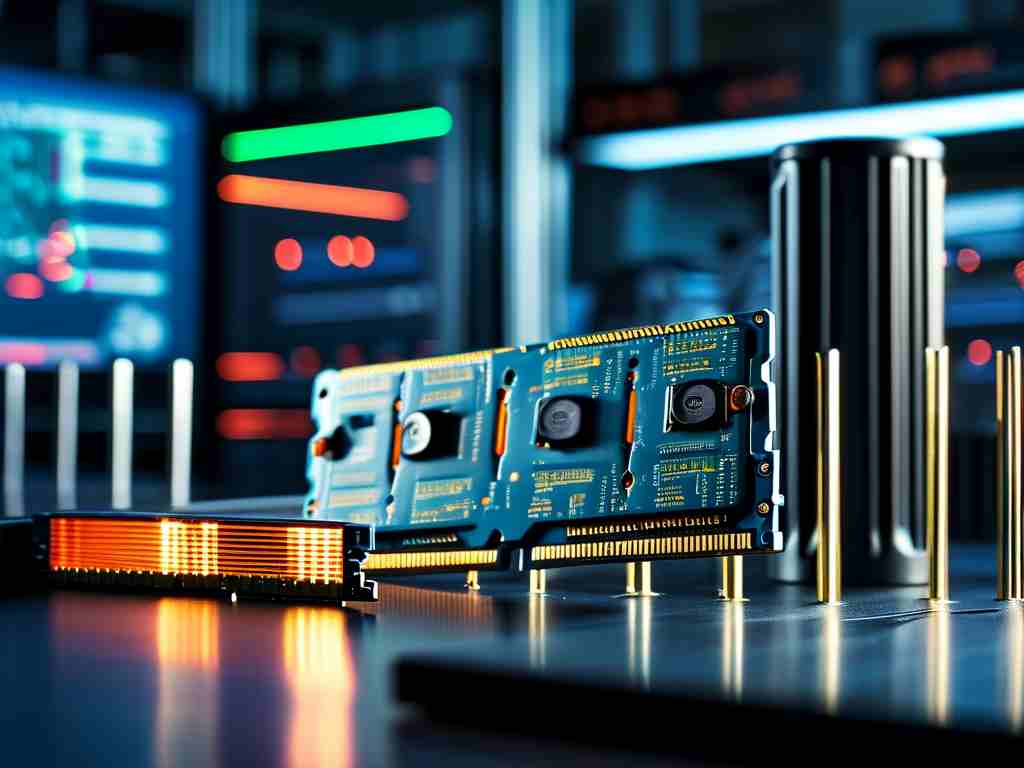In modern computing, managing memory voltage ranges is critical for balancing performance gains with hardware longevity. This article explores methodologies for calculating safe voltage thresholds while addressing common misconceptions about overclocking and system stability.

Understanding Baseline Voltage Requirements
Every memory module operates within manufacturer-defined voltage parameters. DDR4 kits typically use 1.2V as standard, while DDR5 starts at 1.1V. These values represent baseline measurements under JEDEC specifications rather than absolute limits. Engineers implement ±5% tolerance buffers to accommodate minor fluctuations, making 1.14V-1.26V the functional range for most DDR4 modules before manual adjustments.
The Overclocking Paradox
Enthusiasts often increase voltage to achieve higher clock speeds, but this approach requires precision. For every 200MHz frequency boost beyond XMP profiles, memory controllers demand approximately 0.03V-0.05V additional power. However, the relationship isn't linear – pushing from 3200MHz to 3600MHz might need +0.04V, while 3600MHz to 4000MHz could require +0.07V due to signal integrity challenges.
A practical calculation framework involves three variables:
- Initial stable voltage (V_initial)
- Target frequency (F_target)
- Thermal headroom (T_max)
The modified voltage equation becomes:
V_new = V_initial + (F_target - F_initial) × 0.0002 × (1 + (T_max - T_current)/10)
Real-World Implementation
Consider a DDR4-3200 CL16 kit rated at 1.35V. To reach 3600MHz at 38°C with a 55°C thermal limit:
V_adjustment = (3600 - 3200) × 0.0002 × (1 + (55 - 38)/10)
= 400 × 0.0002 × 2.7
= 0.216V
New voltage = 1.35V + 0.216V = 1.566V (requires validation) This theoretical value must be tested in 0.01V increments while monitoring error rates. Tools like HCI MemTest or Karhu RAM Test provide granular error detection, with professional overclockers recommending 400% coverage minimum for stability verification.
Thermal Considerations
Voltage increases directly impact thermal output through P = V²/R relationships. Every 0.1V boost at 1.35V baseline raises power dissipation by 15%. Active cooling solutions become mandatory beyond 1.5V, with temperature thresholds varying by IC type:
- Samsung B-die: <45°C for optimal stability
- Micron E-die: Tolerates up to 60°C
- Hynix DJR: Stable until 55°C
Fail-Safe Protocols
Modern motherboards implement multiple protection mechanisms:
- VRM current limiting (typically 40A per DIMM slot)
- Temperature-based throttling (starts at 80°C for most boards)
- Voltage rollback on failed POST attempts
Advanced users can bypass some safeguards through BIOS modifications, but this requires physical voltage measurement tools like multimeters connected to DIMM test points.
Industry Trends and Future Developments
The shift to DDR5 introduces power management integrated circuits (PMICs) on memory modules themselves. These allow per-module voltage tuning from 1.0V to 1.435V in 0.005V steps, significantly improving adjustment granularity compared to DDR4's motherboard-controlled voltage regulation.
Automated overclocking utilities now employ machine learning algorithms that analyze error patterns to suggest voltage optimizations. ASUS' MemTest Helper 2.0 demonstrated 12% faster stabilization times compared to manual tuning in controlled tests.
Practical Recommendations
- Always establish baseline stability before overclocking
- Limit daily-driver voltage to 1.45V for DDR4 and 1.35V for DDR5
- Implement direct airflow over DIMM slots
- Validate settings across multiple stress test utilities
- Maintain detailed logs of voltage/frequency/temperature correlations
By methodically calculating and validating memory voltage parameters, users can safely extract additional performance while minimizing hardware degradation risks. The key lies in understanding that voltage optimization is a marathon – incremental adjustments with thorough testing yield better long-term results than aggressive overvolting.

